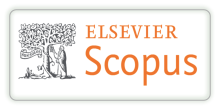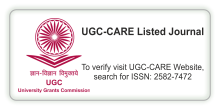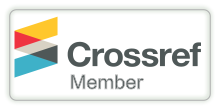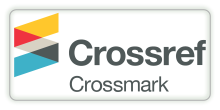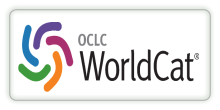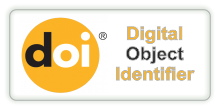SELF-EFFICACY AS A PROTECTIVE FACTOR IN MENTAL HEALTH: INSIGHTS FROM AN EARLY ADULTHOOD PERSPECTIVE
DOI:
https://doi.org/10.29121/shodhkosh.v5.i1.2024.6410Keywords:
Self-Efficacy, Bandura’s Social Cognitive Theory, Early Adulthood, Mental HealthAbstract [English]
Self-efficacy is an important protective factor for mental health in early adulthood, especially during transitional life phases with increased sensitivity to stress and inter-role conflicts.
Drawing on Bandura's social cognitive theory, this study synthesises existing data to investigate how self-efficacy promotes psychological resilience, coping mechanisms, and mental well-being throughout early adulthood, with a particular emphasis on gender-specific experiences. Empirical research shows that stronger self-efficacy is connected with lower stress, better family functioning, and better coping, particularly among women juggling career and household commitments. The review also emphasises the moderating impacts of familial environment, cultural context, and professional position, emphasising how self-efficacy interacts with other social variables. Future research implications include developing targeted treatments, addressing structural hurdles, verifying cross-cultural models, and applying longitudinal approaches.
Overall, developing self-efficacy emerges as a critical approach for promoting mental health resilience in young people navigating complicated psychosocial environments.
References
Anupama, K. (2018). Hypothesis types and research. International Journal of Nursing Science Practice and Research, 4(2), 78-80. https://doi.org/10.37628/ijnspr.v4i2.812
Apte, R., & Bhatt, S. (2023). Family environment and perceived stress amongst working and non-working women. International Journal of Social Science Research and Review, 6(7), 38–48. http://ijssrr.com
Asfahani, A. M. (2021). Work-life balance and role conflict among academic staff in the Middle East: A review of literature. International Journal of Higher Education, 10(5), 82–87. https://doi.org/10.5430/ijhe.v10n5p82
Aftab. S., Younas. N. and Nisar. I. (2021). Comparison Between Working and Non-Working Women in Household Activities in Decision-Making Patterns. Journal of Business and Social Review in Emerging Economies, 8(2), 427-440.www.publishing.globalcsrc.org/jbsee
Agrawal, M. (2020). A study of role conflict among women teachers of nuclear and joint families of government school. International Journal of Research Culture Society, 4(4), 109–114. Retrieved from http://www.ijrcs.org
Ahmad, M. S., Shah, I. A., & Fakhr, Z. (2011). Working women work-life conflict: A case study of banking sector in Pakistan. World Applied Sciences Journal, 13(3), 623–631. DOI: 10.1108/17515631111185923
Apte, R., & Bhatt, S. (2023). Family environment and perceived stress amongst working and non-working women. International Journal of Social Science Research and Review, 6(7), 38–48. http://ijssrr.com
Arifah, D. A., Akbar, R. A., Ma’rifah, S., & Rahmania, A. (2022). Interrole conflict and coping strategies among working mothers. Southeast Asian Journal of Tropical Medicine and Public Health, 53(Suppl. 2), 726–742. http://repo.unida.gontor.ac.id/3056/1/04.pdf
Arora, R. (2015). Importance of interior decoration in home. Journal of Civil Engineering and Environmental Technology, 2(3), 219–220. http://www.krishisanskriti.org/jceet.html
Asfahani, A. M. (2021). Work-life balance and role conflict among academic staff in the Middle East: A review of literature. International Journal of Higher Education, 10(5), 82–88. http://ijhe.sciedupress.com
Baiocco, R., Pistella, J., Gomez Plata, M., Morelli, M., Isolani, S., Zapata Zabala, M. E., Cabas Hoyos, K. P., Uribe Tirado, L. M., Ruiz Garcia, M. S., Barbosa, C. P., Zuffiano, A., Gerbino, M., Laghi, F., & Pastorelli, C. (2024). The influence of positivity and self-efficacy beliefs on family functioning among young adults in Italy and Colombia. Frontiers in Psychology, 15, 1411263. https://doi.org/10.3389/fpsyg.2024.1411263
Bajpai, D. (1994). Interrole conflict as related to marital role disturbance, interpersonal communication and mental health of female teachers (Unpublished master’s thesis). University of Lucknow, Department of Psychology. http://hdl.handle.net/10603/549909
Bandura, A. (1977). Self-efficacy: Toward a unifying theory of behavioral change. Psychological Review, 84(2), 191-215.
Bandura, A. (1986). Social foundations of thought and action: A social cognitive theory. Prentice-Hall.
Bandura, A. (1994). Self-efficacy. In V. S. Ramachaudran (Ed.), Encyclopedia of human behavior (Vol. 4, pp. 71-81). New York: Academic Press. (Reprinted in H. Friedman [Ed.], Encyclopedia of mental health. San Diego: Academic Press, 1998).
Bandura, A. (1997). Self-efficacy: The Exercise of Control. New York, NY: Freeman.
Benazi, B., Bashir, S., Zafar, R., Ahmed, M., & Farooq, K. (2021). A sociological analysis of the attitude of working females towards the joint family system: A case study of Quetta City. Indian Journal of Economics and Business, 20(2), 1779-1791. http://www.ashwinanokha.com/IJEB.php
Bharvad, G. (2016). Professionally employed women and homemakers on self-esteem and self-efficacy. International Journal of Social Impact, 1(1). DOI: 10.25215/2455/0101003
Bhatia, H., & Chadha, N. K. (1993). Manual for Family Environment Scale (pp. 1–2). Ankur Psychological Agency.
Bhat, V., & Nischitha, S. (2022). Role of women in traditional families – A review. Journal of Veda Samskrita Academy, Centenary Commemoration Volume, Volume I, 381–384.
Bhattacharya, S., & Pramanik, R. (2016). Multiple roles at conflict: Reflections from life career families in Western Odisha, India. International Journal of Humanities and Social Science Invention, 5(9), 11–18. http://www.ijhssi.org
Baiocco, R., Pistella, J., Gomez Plata, M., Morelli, M., Isolani, S., Zapata Zabala, M. E., Cabas Hoyos, K. P., Uribe Tirado, L. M., Ruiz Garcia, M. S., Barbosa, C. P., Zuffianò, A., Gerbino, M., Laghi, F., & Pastorelli, C. (2024). The influence of positivity and self-efficacy beliefs on family functioning among young adults in Italy and Colombia.Frontiers in Psychology, 15, 1411263. https://doi.org/10.3389/fpsyg.2024.1411263
Burger, C. J., Raelin, J. A., Reisberg, R. M., Bailey, M. B., & Whitman, D. (2010). Self-efficacy in female and male undergraduate engineering students: Comparisons among four institutions. In Proceedings of the ASEE Southeast Section Conference.
Chiș, R., Ignat, S., Roman, R., Demeter, E., Chiș, S., Rad, D., & Arion, F. H. (2024). The influence of educational level on self-efficacy, introversion, and agreeableness: An interpersonal difference analysis. Revista Românească pentru Educaţie Multidimensională, 16(2), 569–580. https://doi.org/10.18662/rrem/16.2/872
Chaurasia, K., & Kumari, A. (2023). A study of psychological well-being and general self-efficacy among housewives and working women. International Education & Research Journal (IERJ), 9(7), 46-48.
Chen, L., & Lopez, M. (2023). The persistent inequality: Gender disparities in household labor among dual-earner couples. Journal of Family Psychology, 37(3), 412-428.
Child D. (2006). The Essentials of Factor Analysis. 3rd ed. London: Continuum.
Dibaji, S. M., Oreyzi, S. H. R., & Abedi, M. R. (2017). Occupation or home: Comparison of housewives and working women in the variables of stress, depression, and perception of quantitative, mental and emotional home demands. Review of European Studies, 9(2), 268–276. https://doi.org/10.5539/res.v9n2p268
Dudu, J. E., Omuta, G. E. D., & Otto, I. (2016). The invisibility of housewives’ contributions to families: Understanding the role of women in household upkeep in Delta State, Nigeria. International Journal of Social Science and Humanities Research, 4(3), 107–118. Available at http://www.researchpublish.com
Downloads
Published
How to Cite
Issue
Section
License
Copyright (c) 2024 Dr. Mahendra Kumar, Ankita Singh

This work is licensed under a Creative Commons Attribution 4.0 International License.
With the licence CC-BY, authors retain the copyright, allowing anyone to download, reuse, re-print, modify, distribute, and/or copy their contribution. The work must be properly attributed to its author.
It is not necessary to ask for further permission from the author or journal board.
This journal provides immediate open access to its content on the principle that making research freely available to the public supports a greater global exchange of knowledge.





